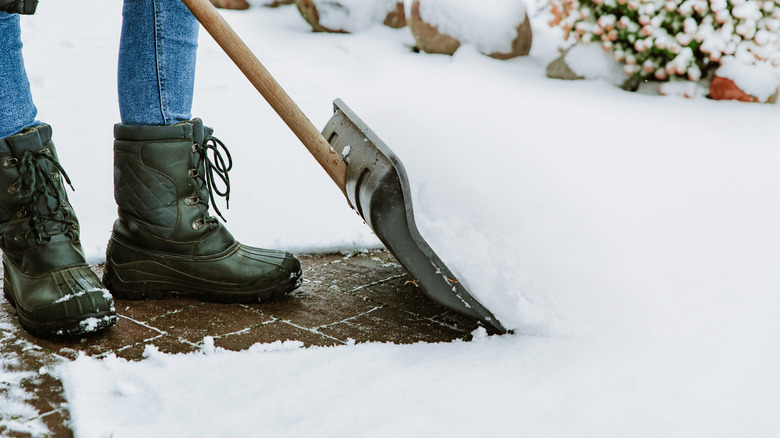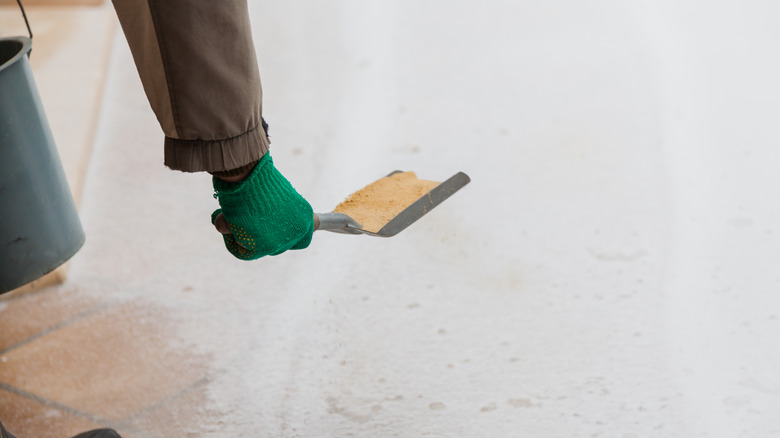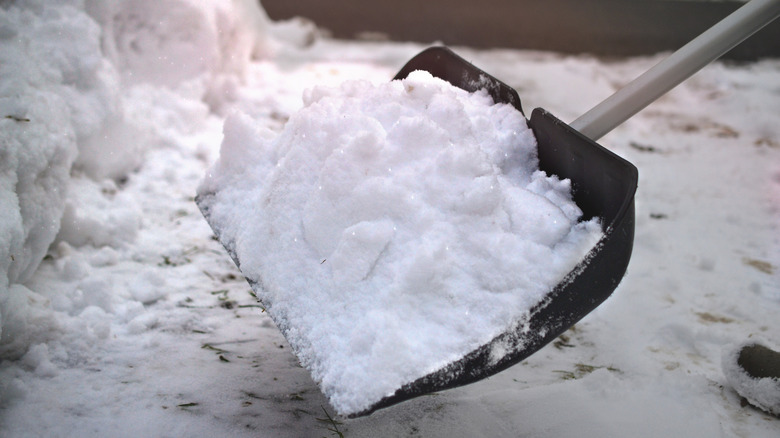Simple Ways To Make Driveway Snow Removal Easier
If you live in an area that receives cold weather and snowfall every winter, your back probably feels sore at the mere thought of shoveling your driveway. Unfortunately, clearing snow is a necessary chore for safety reasons. Some cities even have laws that require citizens to remove it within a specific time frame. For example, Washington, D.C. can legally fine residents who don't clear their sidewalks within eight daylight hours after 36 inches of accumulation (via NPR). Unfortunately, clearing all the snow from your property can feel like a Sisyphian task after winter weather rears its head.
Whether you're facing a time crunch or not, shoveling your driveway after a storm is nobody's idea of fun. Fortunately, there are some ways to make this tiresome task easier. Of course, the best advice is to start clearing snow up ASAP. You'll want to do it while it's still falling and stick to a regular schedule to prevent icy buildup. Don't wait until the next day when it becomes compact, slippery, and overwhelming. Instead, prepare in advance and practice the correct shoveling technique when removing snow: trust us, your achy back will thank you!
Prepare your driveway
Don't wait until it's too late to start thinking about removing snow and ice from your driveway. According to WebMD, approximately 11,000 people end up in the hospital every year from shoveling snow. Most injuries (including broken bones, strained backs, and soft tissue wounds) occur from slipping and falling on ice. Spare yourself the pain and medical bills by dusting your driveway with a thorough coat of ice melt or salt before a winter storm. Salt works by lowering the freezing point of water from 32 degrees to around 15 degrees Fahrenheit (via ThoughtCo.). Therefore, salting your driveway before a storm can prevent the snow from sticking and turning into ice, even if temperatures are below freezing.
Consider laying down a large tarp in your driveway to make your task even more manageable. While lots of snow may be too heavy to drag away all at once, you can stand on the tarp for traction while shoveling and remove it once it's light enough. Also, if it's too late and you need to work around slippery areas, spread some sand or cat litter. The gritty texture will help your feet gain traction on the ice, reducing your fall risk.
Follow these helpful tips
Preparing your driveway for snowfall is important, but so are the tools you use. Thus, make sure you're working smarter, not harder. One classic tip for lightening the load is to spray your shovel with cooking oil before scooping. Cooking oil will help the shovel easily penetrate large piles of snow. The oil will also keep ice from sticking to the pan, helping it slide off so you can work more efficiently. When you're done shoveling, thoroughly wipe away any oily residue before storing the shovel.
A snow shovel shouldn't be the only tool in your arsenal, especially if you live in an area with extreme winter weather. On days when you have a light, fluffy layer of snow, try using a leaf blower to quickly blast it off your driveway before it freezes. However, using sound, high-quality tools on days of heavy accumulation is crucial. WebMD recommends replacing your traditional steel shovel with a long-handled aluminum or plastic one to reduce muscle strain. You may also consider a heavy-duty snow removal method, especially if your body doesn't respond well to physical exertion.


